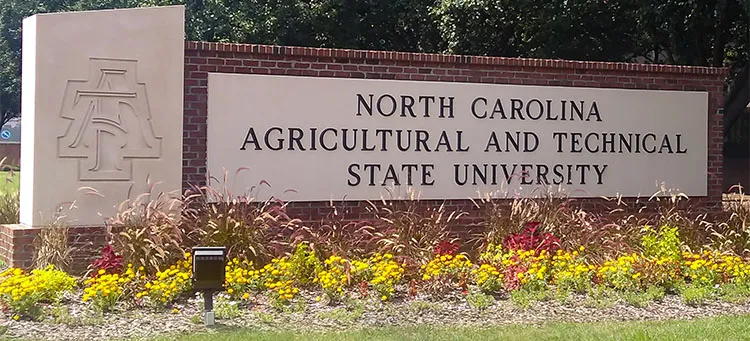By Gabrielle Hayward
When alumni of historically Black colleges and universities return to their alma maters to celebrate homecoming over the next few weeks, many will see new faces in charge on the yard.
As enrollment numbers have continued to increase at HBCUs nationwide in recent years, multiple schools have faced turnovers in leadership, with top executives resigning or retiring.
This issue is not solely present at HBCUs — years of tenure have decreased among collegiate leadership nationwide. However, since 2022, more than 30 of the 107 HBCUs have announced new presidents or chancellors. This summer, two schools even announced leadership changes within hours of each other: Florida A&M University president Larry Robinson stepped down on July 12, the same day Morehouse College president David Thomas announced his upcoming retirement.
Despite the coronavirus pandemic and possibly because of the Supreme Court’s ruling ending affirmative action in college admissions, enrollment numbers have increased at larger HBCUs. Applications to Morehouse College, an all-male institution, grew by more than 8,000 this year, a 34% increase over last year. North Carolina A&T State University received more than 47,000 applications for undergraduates and graduates. Applications surged for Howard University (36,300) and Hampton University (17,000). Morehouse, North Carolina A&T, Howard and Hampton have all announced changes in leadership in the past two years.
Walter Kimbrough, who was named interim president of Talladega College in June, previously was president of Dillard University (2012-22) and Philander-Smith College (2004-12). According to Kimbrough, the job of leading an HBCU is harder than people realize.
“It doesn’t mean you can’t make mistakes, but you can crash these institutions if you make too many,” Kimbrough said. “HBCUs are under-resourced institutions that serve under-resourced people, and when you have those two things together, it makes it a very hard job.”
In April 2023, The American Council of Education wrote that the average tenure of an American college president is shrinking. In 2006, it was 8.5 years; in 2023, it was 5.9 years.
“There is a lot more stability in larger institutions because you are enjoying stronger brand position and interest,” Kimbrough said. “A lot of the schools are in urban areas, so they are able to build on that. If you are out in the middle of South Carolina, you are not having the same impact, and those jobs become harder because sometimes these schools are viewed as less than, and it’s not fair.”
A lack of funding for HBCUs is one factor cited in retaining chancellors and presidents.
At least 16 states have been underfunding HBCUs for more than a century. This chronic underfunding has led to significant disparities in resources and facilities, increasing pressure on HBCU leaders to find solutions for their respective schools.
“It ain’t going to get better unless we do differently,” said William Broussard, vice chancellor of university advancement at the University of Wisconsin-Stevens Point. “Just voting for president ain’t enough, or just voting for governor ain’t enough. Vote every time it matters, every time there are people making decisions about the funding that comes into your community and your state.”
In 6½ years, Broussard worked under six executive leaders while at Southern University and A&M College and Elizabeth City State University. After stints at both HBCUs, he began researching and writing about turnovers in the top position.
“There are a lot of different reasons for departures,” Broussard said. “Some chancellors have a well-earned retirement, like chancellor Harold L. Martin from N.C. A&T, and that is rare. Or when chancellors or presidents decide to expand to other HBCUs, the shuffling of positions causes vacancies in their previous institution.”
Another significant issue that factors into retention of top leaders is boards of trustees’ involvement in the selection process.
This issue has occurred at several HBCUs, including Morgan State University, Alabama State University and South Carolina State University. In 2012, Morgan State University’s board of trustees voted against renewing the contract of president David Wilson. When students and faculty protested, the board revoked its decision, and Wilson has remained in office since then. In 2016, Alabama State University president Gwendolyn Boyd was suspended after the board of trustees lost confidence in her ability to run the school. In 2021, South Carolina State University’s financial woes and declining enrollment contributed to the university board’s firing of then-president James Clark.
“The problem we’ve seen at HBCUs is that it never stops. You have a fraction of the board say, ‘We want this person,’ and so they’ll push the previous person out and put in the new person, and then the honeymoon phase is over after 18 months,” Broussard said. “And all of a sudden, the person they pushed to get, they don’t like that person now. They have this unchecked power.”
Dakota Doman, former acting CEO at Texas Southern University, is a managing principal at TM 2 Executive Search, a consulting firm that helps find executive leaders for HBCUs. TM 2 has aided more than 25 recruitment searches in the past year, he said.
“Every institution is different, and there is a misconception that HBCUs are monolithic in nature just because they are historically Black, but even Black individuals are not monolithic,” Doman said. “What makes an institution special is its differences and its unique set of needs. They want someone who will be transformative in their environment.”

